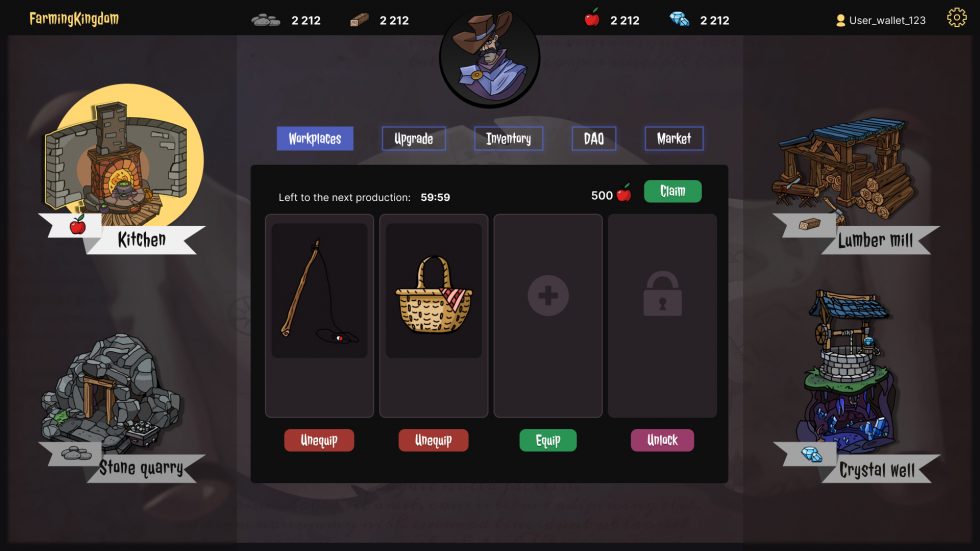Hey WAX game makers! Ready for a step-by-step guide to building your own game on WAX? Let’s dive in:
Atomic Assets Setup: Your toolkit for creating everything cool in the game.
Game’s Main Entities: From farming items and avatars to user profiles – we’ve got you covered.
Random Function Usage on WAX: Add a twist of unpredictability to your game.
Resources and Tokens: The backbone of your game’s economy.
NFT and Token Staking: Let players invest and earn in your game.
Farming of Resources: The heart of resource management.
Blends and Upgrades: Keep players engaged with evolving gameplay.
DAO and Governance: Give your community a voice.
Leaderboards: Fuel the competitive spirit.
Quest Systems: Keep the adventure going.
These essentials are your ticket to building a standout resource farming game on WAX, complete with play2earn excitement. Let’s turn those creative ideas into a gaming reality!
Ready for a deep dive into the building blocks of your WAX game? Let’s break it down:
Articles 1 & 2: We’ll tackle gaming objects like farming items and farmable objects. Imagine a pickaxe, a classic tool, slotting into a stonehouse. We’ll explore how these items interact and their unique properties in resource and token farming.
Article 3: It’s all about resources and tokens. We’re redefining resources as in-game elements exclusive to the game’s economy. As a dev, you’ll learn to navigate which items to use and how.
Article 4: Let’s talk NFT staking. It’s an optional but savvy move to ‘freeze’ assets in a smart contract, steering clear of open markets to boost NFT value. We’ll cover how staking keeps your NFT data in-house, ditching the need for third-party tracking.
Article 5 takes you into the world of farming types and processes – it’s a bit complex, but we’ve got it broken down line by line. Think of farming as harvesting tokens or resources from something like a house, planet, or land plot.
Considering all above our game example can look like this:

That wraps up our introductory series. Next, we’ll dive into game progression, upgrades, and settings, topped off with the UI part of your game. It’s about taking your game from basic to brilliant. Get ready for a deeper understanding of making your game truly engaging.
Article 1 dives into blends, a cool way of merging two items into a new one by specific rules. We’re providing a versatile code snippet, perfect for NFT blends in games or gamifying NFT collections.
In Article 2, we explore upgrades, a twist on blends where you enhance items by changing attributes. The magic lies in setting rules either through NFTs or game logic. Upgrades in our game boost mining rates.
Article 3 focuses on avatars, more than just looks – they’re game changers affecting mining rates and more. We’ll discuss how avatars, equipped with unique items, spice up the gameplay and the NFT market.
The 4th article covers game profiles, essential data storage considerations on the blockchain, even as basic as a username.
Finally, Article 5 tackles UI with ReactJS, teaching you to interact with smart contracts and create a basic game UI.
The upcoming section is all about DAO and governance in your game.
Article 1 tackles swapping resources, a twist on the farming process. It’s about turning resources into tokens, with your own rules for pools, dynamic exchange rates, and even a taxation system.
Article 2 dives into token staking and basic DAO mechanics. Learn how staking tokens can grant voting power and influence game settings.
The third article discusses the proposal system, focusing on in-game voting impacting game dynamics and tokenomics.
The final article will zoom in on the user interfaces for the features discussed, particularly around DAO and governance.
The next block is all about game progression and leaderboards.
Leaderboards: They’re simple yet varied. We’ll show you how to set up different types, like the top miners of specific resources within a set time frame.
Quests: This is more complex, with diverse and dynamic possibilities. Expect general systems and examples like daily logins, staking a certain amount of tokens, or resource exchanges. Quests, like leaderboards, offer rewards for completion.
The final article focuses on UI design for quests and leaderboards, complete with practical code examples.
The last article in this section will delve into the UI aspects of quests and leaderboards, complete with practical code examples to guide you.
Wrapping up the series, we’ll bring the whole game together, covering the build and test processes. Remember, while we focus on a fully on-chain game, integration with centralized components for elements like fast PVP battles is possible. This allows for a hybrid approach, combining the strengths of both decentralized and centralized gaming aspects.
P.S. Keep in mind that this article and the accompanying framework may evolve as development progresses.

